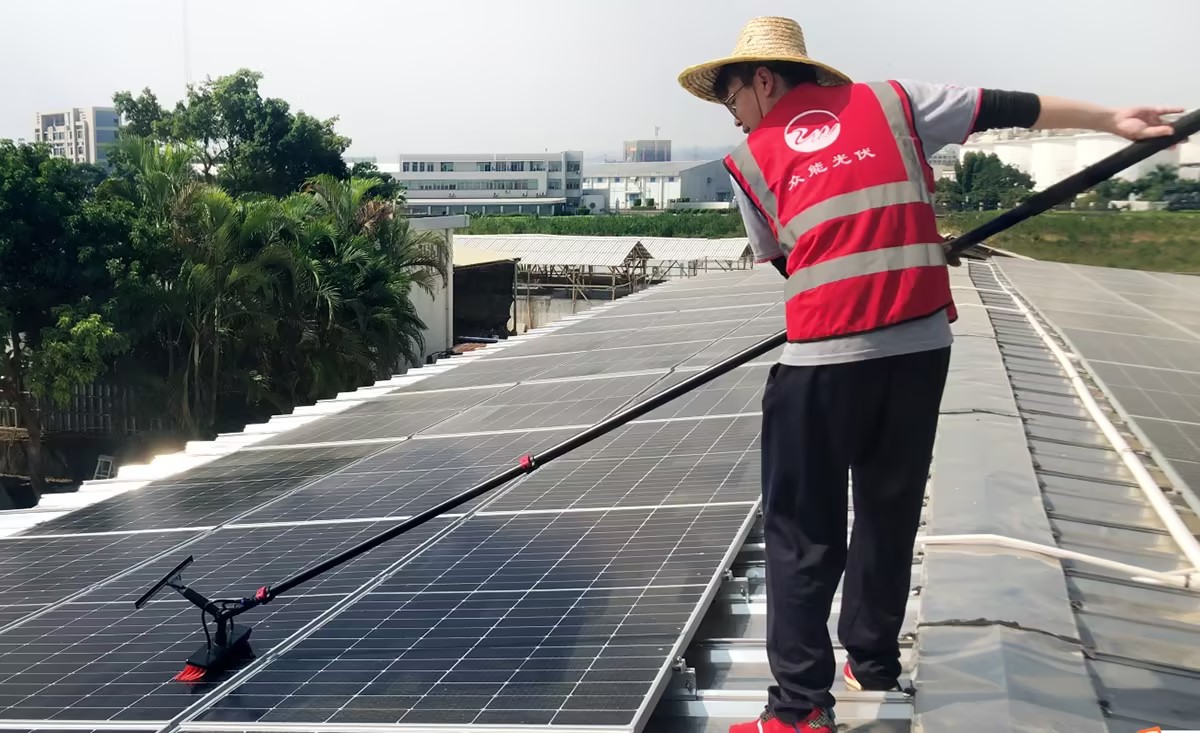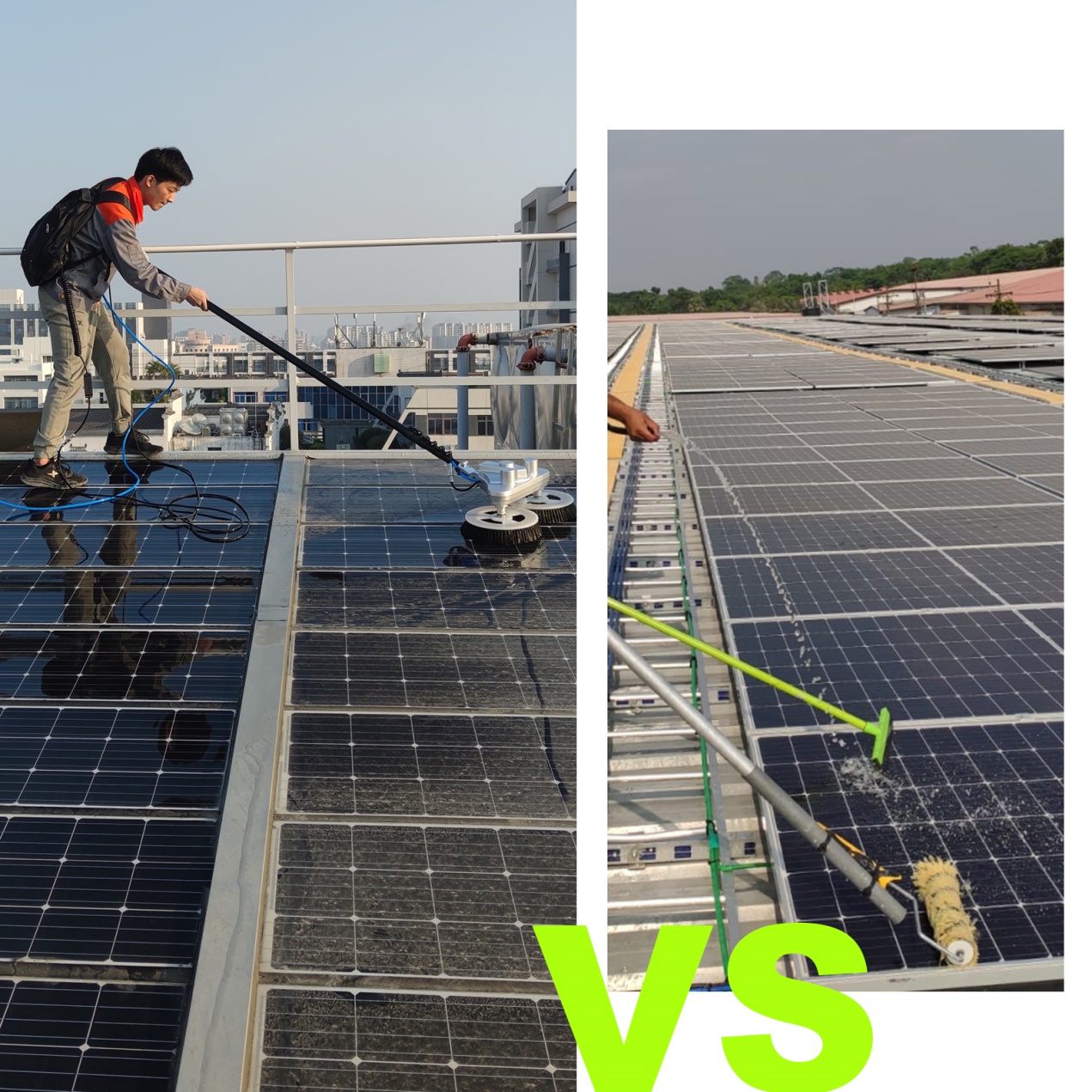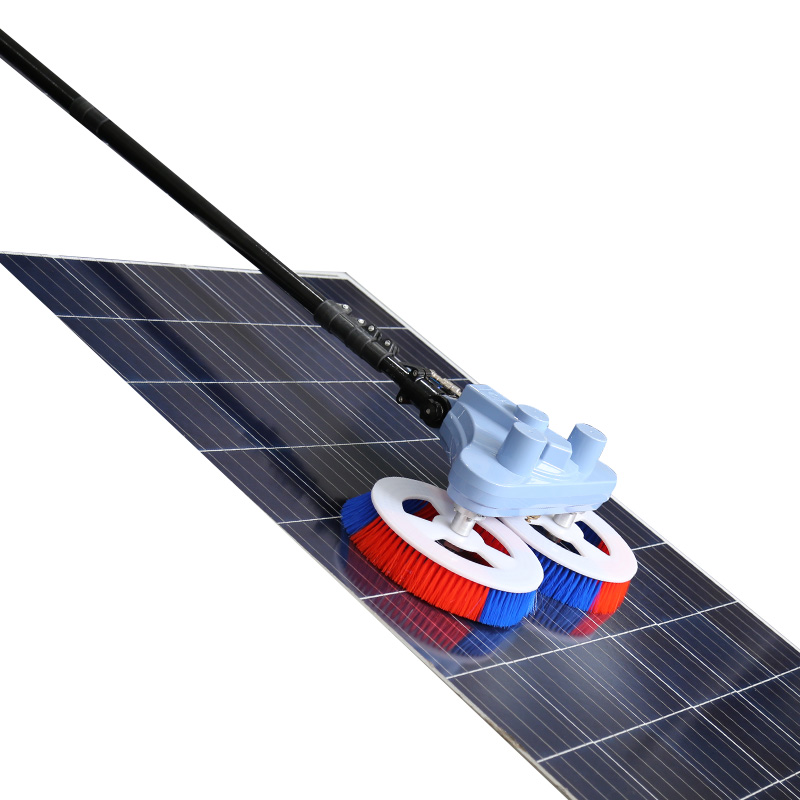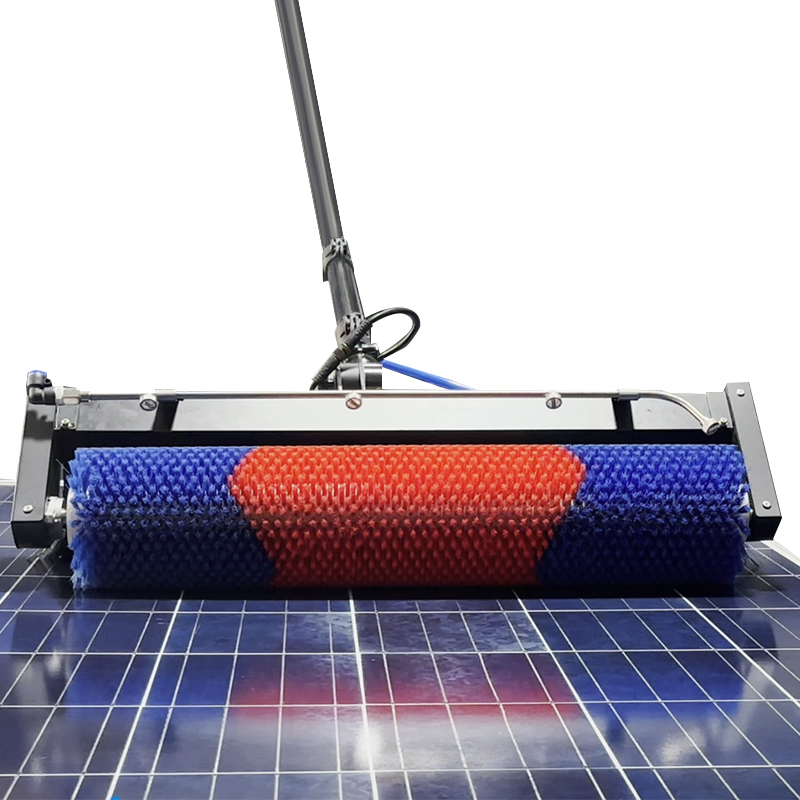Photovoltaic cleaning technology is divided into manual cleaning and mechanical cleaning according to the degree of intelligence. The investment payback period of automatic cleaning equipment is about 2 years, and the annual investment return rate within its lifecycle can reach over 20%.
Currently, most photovoltaic power plants use manual cleaning.
When cleaning, usually 2-3 people work in groups, with one person responsible for managing water supply equipment and arranging water pipes, another person responsible for flushing components with a high-pressure water gun, and a third person responsible for cleaning dead corners with a mop and wiping the components dry.
With the development of technology, integrated manual cleaning tools have emerged, which integrate high-pressure water nozzles and rotating brushes. The push rod is made of carbon fiber material, and the tool has high efficiency, low water consumption, low labor intensity, and low price. Therefore, it is highly favored by professional photovoltaic power plant cleaning companies.
In general, manual cleaning is carried out once every quarter. For large ground power plants, it takes about 1-2 months to clean each time. This method has the lowest single cost, currently costing about 1500-3000 yuan/MW (slightly lower in western regions). However, the work efficiency is low, the cleaning cycle is long, and there are often situations where the power plant has not been completely cleaned and is contaminated again. The increase in power generation of the power plant generally does not exceed 2%.
The biggest disadvantage of manual cleaning is that the cleanliness of component cleaning heavily relies on the sense of responsibility of construction personnel and cannot be effectively controlled.
At present, mechanical cleaning technology can be divided into three schemes: 1) single row cleaning, 2) multi row cleaning, and 3) large format cleaning.
The development direction of component cleaning robots is mainly reflected in the following aspects:
1. Clear market segmentation
Equipment manufacturers have started developing different models for different forms of power stations. Currently, the market is segmented into high angle power stations, flat power stations, large row flat power stations, and flat single axis tracking system power stations;
2. The increasing differentiation of technology
This is mainly reflected in the selection and manufacturing process of components, brushes, driving methods, charging methods, and the realization of obstacle crossing capabilities;
3. Integration of multidimensional services
The cleaning robot is equipped with a dedicated camera to perform hot spot detection on components while cleaning, or combined with drones to provide maintenance services such as inspection, testing, and safety checks for power plants.
Customers can choose different cleaning equipment according to their own needs. Multifit Solar has been focusing on the field of photovoltaic power generation for many years, integrating research and development, production, and sales. It has a wide range of manual, semi-automatic, and fully automatic cleaning equipment to meet the cleaning needs of various power plants.
Post time: Dec-10-2024








